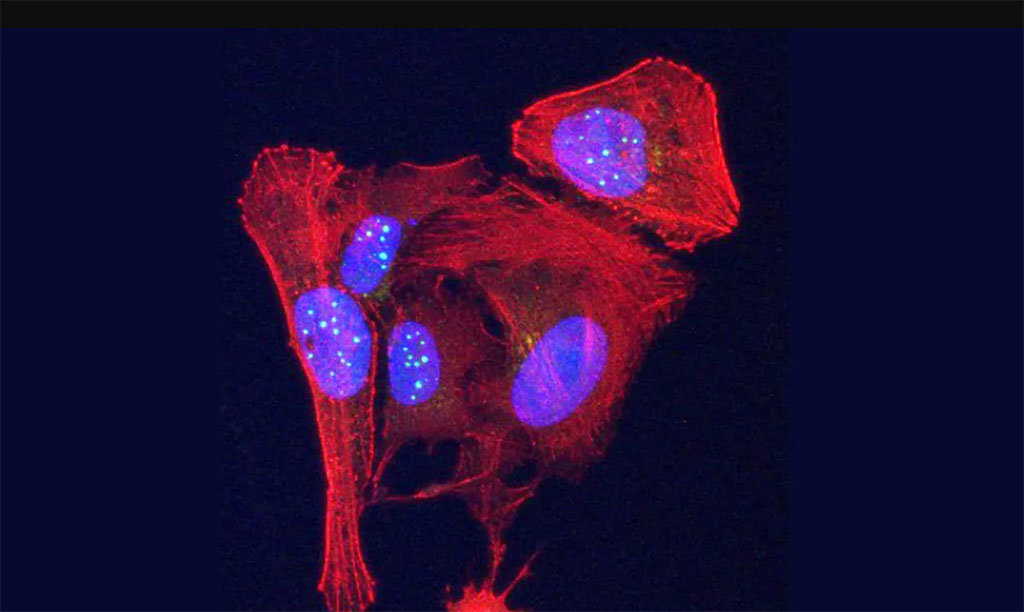Simple Blood Tests for Signaling Proteins Could Predict Cancer or Inflammation
Posted on 24 Feb 2023
Telomeres, sections of DNA found at the ends of our chromosomes, were first identified by scientists around 80 years ago. Telomeres contain a unique DNA sequence consisting of endless repeats of TTAGGG bases that prevent chromosomes from sticking to each other. Telomeres were once believed to be incapable of encoding proteins due to their simple monotonous repetitions of DNA. Two decades ago, researchers demonstrated that the end of a telomere’s DNA loops back on itself to form a tiny circle, thereby hiding the end and blocking chromosome-to-chromosome fusions. When cells divide, telomeres shorten, eventually becoming so short that the cell is unable to divide properly anymore, leading to cell death. Now, the same researchers have found that telomeres hold a potent biological function that could be relevant to our understanding of cancer and aging.
Researchers at UNC School of Medicine (Chapel Hill, NC, USA) have made the stunning discovery that telomeres hold genetic information to produce two small proteins, one of which was found to be elevated in specific human cancer cells and cells from patients with telomere-related defects. In 2011, a group of researchers studying an inherited form of ALS found that an RNA molecule containing a six-base repeat could by a novel mechanism generate a series of toxic proteins consisting of two amino acids repeating one after the other. In the latest study, the researchers found a striking similarity of this RNA to the RNA generated from human telomeres, and believe that the same novel mechanism could be in play.

They conducted experiments to show how telomeric DNA can instruct the cell to produce signaling proteins termed as VR (valine-arginine) and GL (glycine-leucine). Signaling proteins are basically chemicals that trigger a chain reaction of other proteins inside cells that eventually lead to a biological function important for health or disease. The researchers then chemically synthesized VR and GL to examine their properties using powerful electron and confocal microscopes, accompanied by state-of-the-art biological methods. They found elevated amounts of VR protein in some human cancer cells and in cells from patients suffering from diseases as a result of defective telomeres.
“Based on our research, we think simple blood tests for these proteins could provide a valuable screen for certain cancers and other human diseases,” said Jack Griffith, the Kenan Distinguished Professor of Microbiology and Immunology and member of the UNC Lineberger Comprehensive Cancer Center. “These tests also could provide a measure of ‘telomere health,’ because we know telomeres shorten with age.”
“Many questions remain to be answered, but our biggest priority now is developing a simple blood test for these proteins. This could inform us of our biological age and also provide warnings of issues, such as cancer or inflammation,” added Griffith.
Related Links:
UNC School of Medicine









 Analyzer.jpg)



